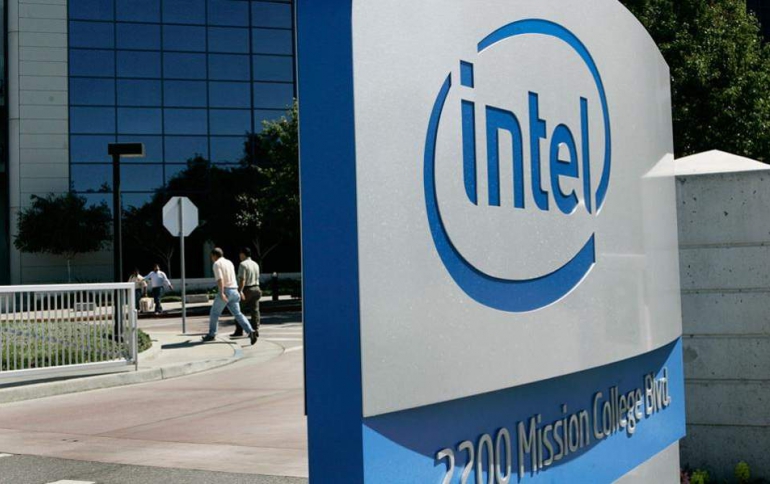
Intel Reports Better Than Expected Third-quarter Results, Delays Broadwell Chip
Intel's third-quarter results beat expectations on Tuesday, but its current-quarter revenue outlook fell short as the chipmaker's core personal computer market continued to struggle.
The company posted net earnings of $2.95 billion compared to $2.97 billion in the year-ago quarter. Revenue was $13.48 billion, barely changed from $13.46 billion in the year-ago quarter. Intel forecast revenue of $13.7 billion, plus or minus $500 million for the current fourth quarter.
"The third quarter came in as expected, with modest growth in a tough environment," said Intel CEO Brian Krzanich. "We're executing on our strategy to offer an increasingly broad and diverse product portfolio that spans key growth segments, operating systems and form factors. Since August we have introduced more than 40 new products for market segments from the Internet-of-Things to datacenters, with an increasing focus on ultra-mobile devices and 2 in 1 systems."
Intel chief executive says that he expects OEMs to push prices down over the coming weeks, and that this will result in $99 tablets, $299 Haswell laptops, and $349 2-in-1 hybrid tablets and notebooks.
For devices build around the Bay Trail silicon, Krzanich believes that there will be eight to 10 clamshell models available at the $299 price point.
But the Broadwell chip, which will succeed Haswell, will be delayed due to technical setbacks, Brian Krzanich told analysts on a conference call following Intel's quarterly report on Tuesday.
He said production of the Broadwell chips, based on the 14 nanometer technology that is ahead of rivals' technology, will not begin until the first quarter.
Krzanich also commented on Apple's new 64-bit A7 chip.
"All of our products are 64-bit. The products we're shipping today are already 64-bit. And if you take a look at things like transistor density. And if you compare, pardon the pun, apples to apples, and compare the A7 to our Bay Trail, which has a high-density 22-nanometer technology, then our transistor density is higher than the A7 is," he said. "The A7 is a good product, but we do see the Moore's Law advantage from 28 [nanometer] to 22, when you compare dense technology to dense technology. And we believe 14 nanometers is just another extension of Moore's Law. That is, twice the density [of 22-nanometers]," he added.
"The third quarter came in as expected, with modest growth in a tough environment," said Intel CEO Brian Krzanich. "We're executing on our strategy to offer an increasingly broad and diverse product portfolio that spans key growth segments, operating systems and form factors. Since August we have introduced more than 40 new products for market segments from the Internet-of-Things to datacenters, with an increasing focus on ultra-mobile devices and 2 in 1 systems."
Intel chief executive says that he expects OEMs to push prices down over the coming weeks, and that this will result in $99 tablets, $299 Haswell laptops, and $349 2-in-1 hybrid tablets and notebooks.
For devices build around the Bay Trail silicon, Krzanich believes that there will be eight to 10 clamshell models available at the $299 price point.
But the Broadwell chip, which will succeed Haswell, will be delayed due to technical setbacks, Brian Krzanich told analysts on a conference call following Intel's quarterly report on Tuesday.
He said production of the Broadwell chips, based on the 14 nanometer technology that is ahead of rivals' technology, will not begin until the first quarter.
Krzanich also commented on Apple's new 64-bit A7 chip.
"All of our products are 64-bit. The products we're shipping today are already 64-bit. And if you take a look at things like transistor density. And if you compare, pardon the pun, apples to apples, and compare the A7 to our Bay Trail, which has a high-density 22-nanometer technology, then our transistor density is higher than the A7 is," he said. "The A7 is a good product, but we do see the Moore's Law advantage from 28 [nanometer] to 22, when you compare dense technology to dense technology. And we believe 14 nanometers is just another extension of Moore's Law. That is, twice the density [of 22-nanometers]," he added.





















